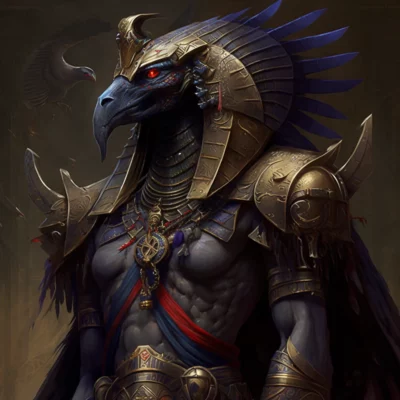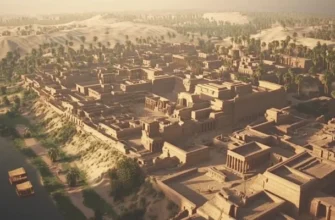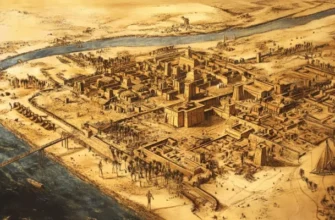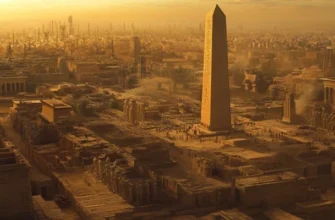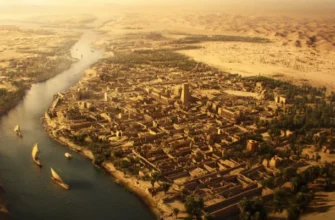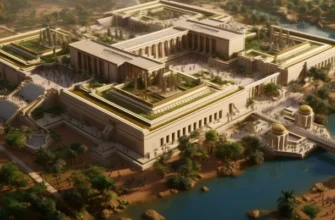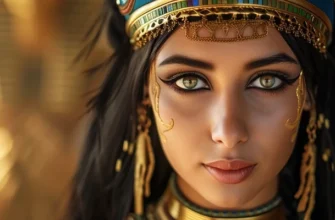Amun-Ra is a majestic god of ancient Egypt who combines two cult deities: Amun, the god of the air, and Ra, the god of the sun. He is one of the most important gods in Egyptian mythology and is considered a god of the pantheon.
Amun is the sun god of the ancient Egyptians. The prefix “Ra” in his name means the sun. Amun is the king of all the gods, as well as the supreme patron of the power of the pharaohs. His name is associated with the famous golden book of Amun Ra, a fictional or real man-made relic that is divided into two parts: the book of the living and the book of the dead. Amun always wears a crown on his head and holds a scepter, symbols of power.
The history of Amun-Ra
The existence of the cult of Amun and Ra in Egypt has a long history. In the initial period of its existence, the cult of Amun was associated with a mountain called Jebel el-Kalamun. Subsequently, in a complex process of syncretism that took place during the third millennium BC, the cult of Ra was merged with the cult of Amun, forming Amun-Ra.
Initially, the sun god of the ancient Egyptians was the patron saint of the city of Thebes. He was considered a heavenly deity in the city.
The god Amun was known far beyond the borders of Egypt; the ancient Greeks sang him and identified him with Zeus, and wrote hymns and odes to him. It was the oracle of Amun-Ra that announced that Andromeda should be given to the monster. Also, the Egyptian sun oracle called Alexander the Great the son of Zeus-Amon, which contributed to the development of his delusions of grandeur and confidence in his own divine origin.
From a mythological point of view, the elaboration of the image of Amun is rather sparse. His wife is Mut. They had a son, the moon god Khonsu. The three of them were called the Theban triad. During the first transitional period, references to Amun are no longer limited to just a god, the supreme deity who created the entire world. After that, the high priestesses were given the title of “wife of the god Amun,” but soon this title was given exclusively to women in the royal line. When Thebes, as a result of historical processes, began to prosper and rise in the Egyptian kingdom, the cult of Amun automatically rose. He became the main state god.
In the ancient Egyptian pantheon, Amun-Ra was one of those gods who had a cult temple in both Egyptian capitals, Memphis and Theodakht. This shows the importance of this god in the ancient Egyptian religion.
Characteristics of Amun-Ra
Amun-Ra was depicted as a man with the head of a lamb or ram, symbolizing his connection with flocks of sheep, as well as a falcon or hawk. His main symbol, the sun with an arrow, symbolized the sun at its zenith. Amun-Ra was also often depicted with his wife, the goddess Mut.
Amun-Ra was considered the god of the sun, who gave light and vitality to all living things. He was also the god of war, often depicted with weapons in his hands. At a deeper level, Amun-Ra represented a single entity that united the solar and spiritual principles. The god of the Egyptian pantheon was also associated with wealth, magic, and mysticism.
The cult of Amun-Ra
The cult of Amun and Ra spread not only in Egypt, but also in the northern territories of modern Sudan and western Libya. This suggests that Amun-Ra was a very influential god in northeast Africa.
The cult of Amun was popular among pharaohs and their supporters. One of the most perfect temples dedicated to Amun-Ra was built in Luxor by Pharaoh Amenhotep III. Also in the temples of Amun were preserved significant treasures that show the greatness and wealth of this cult.
Amun-Ra was considered a military deity
The Egyptian god Amun-Ra, in addition to solar and spiritual aspects, was also associated with war and state defense. He was considered the protector of pharaohs and their armies, and his presence on the battlefield was supposed to ensure victory.
In ancient Egyptian mythology, Amun-Ra was often depicted with weapons, such as a spear and a shield. He was also often correlated with the god Montu, who was responsible for war and the protection of the state.
Amun-Ra was associated with the holy city of Thebes, which was one of the centers of military power in Egypt. He was also associated with the cult of the Nubian warriors, who were the largest military force in ancient Egypt.
One of the most famous myths associated with Amun-Ra is the legend of a warrior god who went in search of the gods to ask for their help in fighting against his enemies. Amun-Ra answered his prayer and helped him defeat his enemies by giving him strength and courage.
In the military terminology of ancient Egypt, Amun-Ra was also associated with the term “golden it”, which meant “blessed warrior”. This suggests that Amun-Ra played an important role in the military culture of ancient Egypt.
It is also worth noting that the military role of Amun-Ra was associated not only with the physical aspects of war, but also with the psychological impact on the soldiers. He gave them faith and hope for victory, which was very important in such stressful situations as combat.
In addition, Amun-Ra was associated with the cult of warrior gods, which contributed to their spread and popularization among military units. This cult was especially widespread among the Nubian warriors, who played an important role in the military power of ancient Egypt.
It should also be noted that Amun-Ra was associated with the cult of Pharaoh as a warrior. Pharaoh was considered a heavenly god and had the right to rule over the earth and its people. Amun-Ra helped Pharaoh to ensure stability and order in the state, which was especially important in times of war and conflict.
Thus, we can conclude that Amun-Ra played an important role in the military culture of ancient Egypt. He was associated with war and the defense of the state, was the patron saint of pharaohs and their armies, and his presence on the battlefield was supposed to ensure victory.
Amun-Ra in the modern world
Although the cult of Amun-Ra was destroyed many centuries ago, the god still remains an important figure for researchers of ancient Egyptian culture and art. His images are used in various modern cultures and art, from tattoos to movies.
In addition, a significant number of temples dedicated to Amun-Ra and Amun and numerous religious sites have been found in Egypt and have become tourist attractions.
Conclusion.
Amun-Ra is a deity that occupies an important place in ancient Egyptian religion and culture. His significance in the modern world is that images and symbols of Amun-Ra remain popular.
Thus, we can conclude that Amun-Ra was considered not only a deity of the sun and spirituality, but also a military god who played an important role in protecting the state and fighting against enemies. He was the patron saint of the pharaohs and their armies, and his presence on the battlefield was considered a key factor in ensuring victory.
